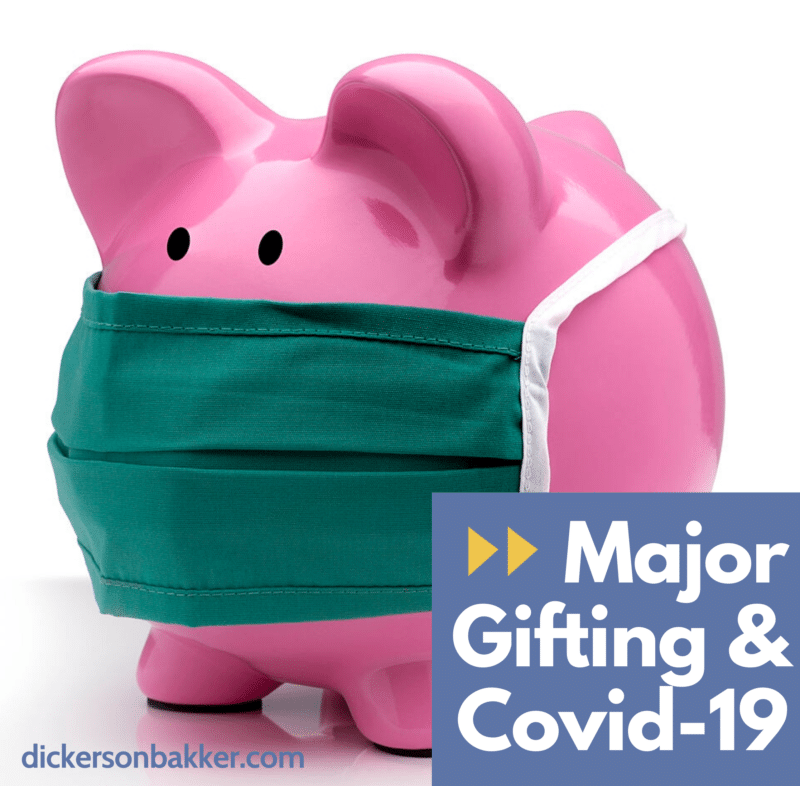It’s July 2008. Having accepted a Development Director position, I began my fundraising career approximately 60 days ahead of the September 29 crash. And keep in mind that 2008 was also a crucial election year.
Was it tough raising money during this ominous climate?
Honestly, I don’t remember a negative impact on the amount of funds I raised. I did encounter some resistance from foundations in light of their corpuses nearly becoming corpses. And perhaps some of my other assigned partners gave a lower gift amount than what I had asked for. But overall, the impact wasn’t palpable.
Being mindful of this pandemic, and the unique philanthropic climate in which we find ourselves—promising but also volatile– I thought it worthwhile to provide some thoughts and insights that may prove helpful to fundraising professionals.
First, let’s establish an enduring practice that I employ for major donor work. I seek to meaningfully connect with each donor using every impression…especially the relational interactions.
Although this comes pretty naturally for me, I am still intentional in my communications and strategic in my approach. I know if I can meaningfully connect with a person, that I can grow trust, foster mutual understanding, and achieve some sort of philanthropic alignment.
Perhaps the best way to connect with a donor is to embody authenticity and an acceptable level of vulnerability.
This means that if I am Zooming with a major investor during this season, I’m going to extend meaningful questions about the donor’s wellbeing–and that of their family– as it relates to the pandemic. My questions are tailored based on my knowledge of the donor, my sense of how they are doing overall, their mood, my instincts, etc.
I will tune into their body language and voice inflections. I want to understand any fears they have and discern their beliefs.
Although this may seem rudimentary to some, and perhaps invasive to yet others, in reality, I observe a considerable number of nonprofit leaders and development professionals operating from either a place of fear or a place of indifference.
Perhaps my fear is growing the donor’s fear and thereby cutting off my nose to spite my face. In other words, if I bring up the uncertainty of the market, perhaps this will influence the donor not to give or to stop giving altogether. This also includes projecting my own fear of rejection onto the donor or fear of offending them.
Or perhaps my position to the whole Covid-19 is “God is in control; so, any mention of a potentially ominous forecast is at a minimum unproductive and conceivably even a lack of faith.”
Reconciling the Two Positions
While there is a certain level of discretion contained in both of these positions, both ultimately fail the test of authenticity and vulnerability. And rather than being ‘donor-centric,’ these positions are intentionally myopic, me-centric, and another form of “playing scared to lose.” There’s no imagination. While neither of these ostensible approaches do anything to noticeably hurt the relationship and engagement of the donor, they certainly don’t advance the relationship or partnership.
Conclusion
If I connect with a donor through my acknowledgement of Covid-19, and perhaps even a discussion surrounding the impact, the two of us are now standing beside each other mutually looking at the problems of uncertainty and the increased or new demands on the nonprofit. The subsequent justification for increasing support is a natural pathway forward in many cases. Moreover, this type of experience has the potential of being redemptive and transformative for both the donor and me, the fundraiser.
The alternative is holding my cards close to the vest and keeping the donor at arm’s length. The entire experience is transactional.
Click here for the second part of this post. I share practical steps on things to say, when & how to say them, what not to say etc.


